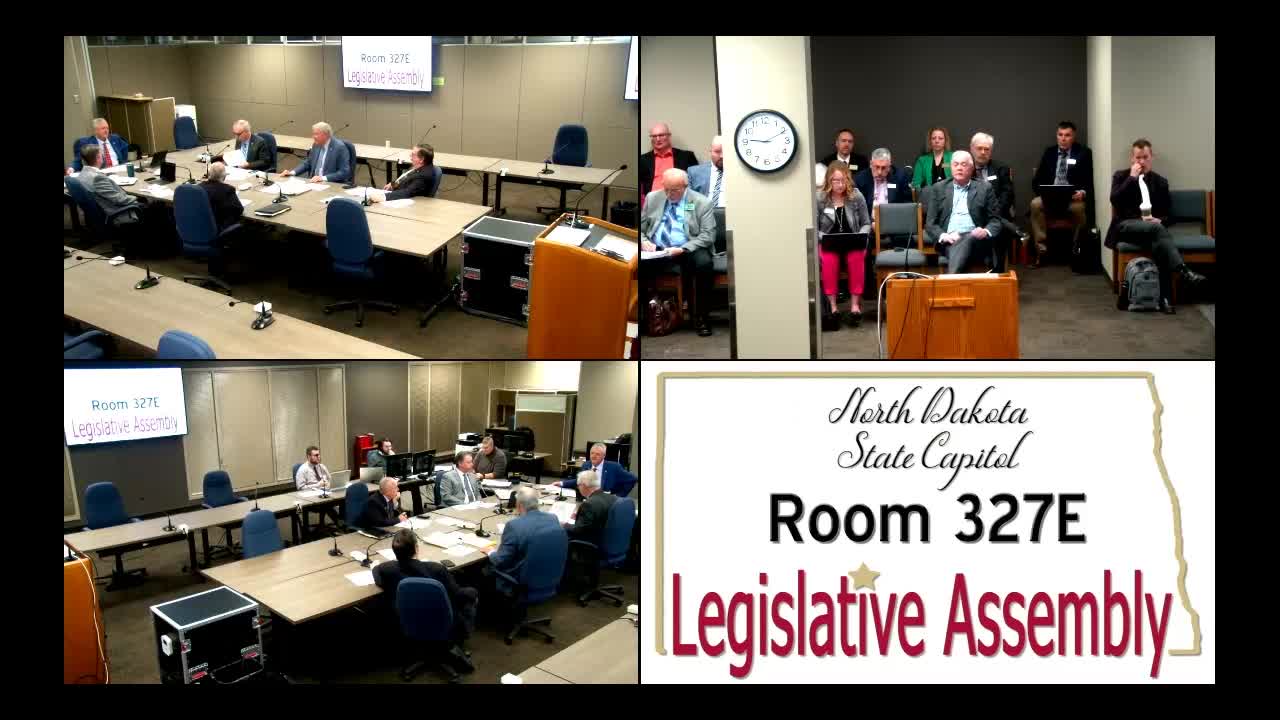Legislators discuss property tax relief and gap funding for North Dakota schools
April 25, 2025 | House of Representatives, Legislative, North Dakota
This article was created by AI summarizing key points discussed. AI makes mistakes, so for full details and context, please refer to the video of the full meeting. Please report any errors so we can fix them. Report an error »

The North Dakota Legislature's recent conference committee meeting on April 25, 2025, focused on critical discussions surrounding property tax relief and funding for public schools. A key takeaway from the meeting was the proposal to implement a 3% cap on property tax increases, which aims to provide immediate relief to taxpayers while addressing the financial needs of school districts.
During the meeting, state auditor reports highlighted that while some school districts have healthy reserves, these funds are often earmarked for specific purposes, such as building projects. For instance, the Williston school district has a substantial balance in its building fund, which is currently being utilized for a $60 million construction project. This underscores the importance of distinguishing between available funds and those that are already committed.
Committee members discussed the implications of the proposed tax cap, emphasizing that even with relief measures, taxpayers may still face annual increases due to existing mill levies and property evaluations. The conversation also touched on the necessity of gap funding, estimated at around $17 million annually, to support districts facing shortfalls. This funding is crucial for maintaining operational budgets and ensuring that schools can continue to provide quality education.
The committee acknowledged the unpredictability of property valuations and the potential need for additional funding in future sessions. As districts like Jamestown prepare for significant property assessments, the committee expressed concern about the adequacy of gap funding to meet the needs of rapidly growing areas.
In conclusion, the proposed 3% cap on property taxes represents a significant step towards balancing taxpayer relief with the financial realities of school funding. As the committee moves forward, the focus will remain on ensuring that schools have the necessary resources to operate effectively while navigating the complexities of property tax assessments and funding allocations. The next steps will involve refining the proposed measures and preparing for potential adjustments in future legislative sessions.
During the meeting, state auditor reports highlighted that while some school districts have healthy reserves, these funds are often earmarked for specific purposes, such as building projects. For instance, the Williston school district has a substantial balance in its building fund, which is currently being utilized for a $60 million construction project. This underscores the importance of distinguishing between available funds and those that are already committed.
Committee members discussed the implications of the proposed tax cap, emphasizing that even with relief measures, taxpayers may still face annual increases due to existing mill levies and property evaluations. The conversation also touched on the necessity of gap funding, estimated at around $17 million annually, to support districts facing shortfalls. This funding is crucial for maintaining operational budgets and ensuring that schools can continue to provide quality education.
The committee acknowledged the unpredictability of property valuations and the potential need for additional funding in future sessions. As districts like Jamestown prepare for significant property assessments, the committee expressed concern about the adequacy of gap funding to meet the needs of rapidly growing areas.
In conclusion, the proposed 3% cap on property taxes represents a significant step towards balancing taxpayer relief with the financial realities of school funding. As the committee moves forward, the focus will remain on ensuring that schools have the necessary resources to operate effectively while navigating the complexities of property tax assessments and funding allocations. The next steps will involve refining the proposed measures and preparing for potential adjustments in future legislative sessions.
View full meeting
This article is based on a recent meeting—watch the full video and explore the complete transcript for deeper insights into the discussion.
View full meeting
